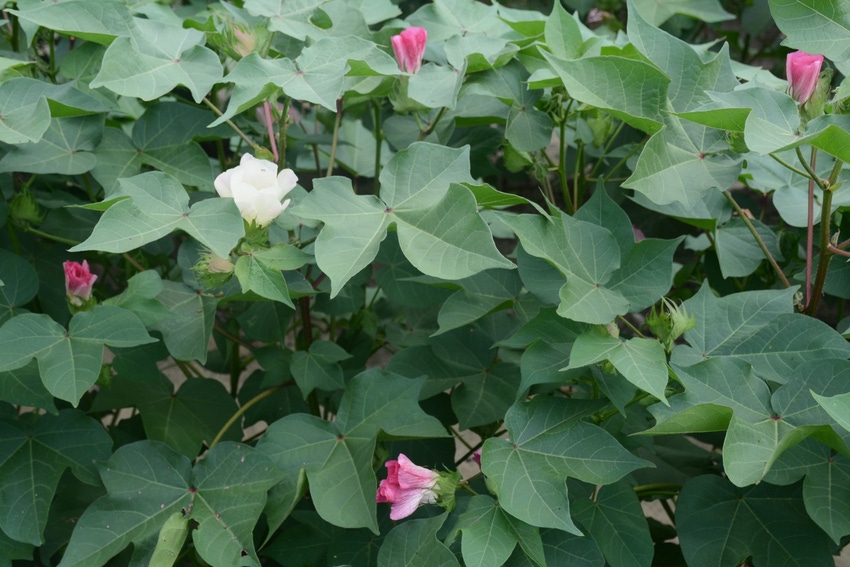
North Carolina State University Extension Cotton Specialist Guy Collins urges North Carolina cotton farmers to fully participate in this year’s North Carolina Department of Agriculture and Consumer Services Cotton Seed Quality Testing Program.
“Cotton seed is a significant investment. Steps must be taken to make sure the seed farmers plant is the highest quality. Seed quality is a perpetual issue that affects us all,” Collins said in a session at the Southern Cotton Growers/Southeastern Cotton Ginners Association annual meeting Jan. 14.
The testing program begins its third year in 2022 and has proven successful in evaluating the cotton seed that comes into North Carolina for both warm and cool germ. The need for the program was triggered when some cotton growers experienced germination problems with the seed they planted in 2019.
In his comments at the Hilton Head conference, Collins emphasized that the lion’s share of the cotton seed entering North Carolina for planting is high quality, good seed. However, there are incidents where lots do enter the state that are poor quality in terms of cool germ and warm germ.
Collins notes that the NCDA testing program has received good support from cotton seed companies since it was launched in 2020. He emphasized it will remain a voluntary program this year, but it needs full participation from both farmers and seed dealers.
“The program is all about transparency so that producers know the quality of seed they are purchasing,” Collins said.
“NCDA has done an excellent job with this program, from their inspectors to the seed lab, the leadership, and everyone else involved. We (myself and Dr. Keith Edmisten) in Extension will continue to emphasize the importance of growers taking responsibility to ensure their seed is tested by NCDA annually. Growers should NOT assume that ALL seed is or will be tested. NCDA can only collect samples from lots they have been notified of, or ones they find, so it's up to the grower to make sure their seed lots are tested for preferably an official sample, or at the very least, a service sample,” Collins said.
Collins explains that both warm and cool germ are analyzed and reported by NCDA. However, the only legal standards for regulatory purposes pertain to warm germ. He said it is important for farmers to know the warm germ and cool germ of each lot of seed they plant, which is another important value of the NCDA program.
“As stated, the large majority of seed in North Carolina is good quality. However, the very few instances of poor-quality seed are concerning for us in Extension, and this is one reason why the program exists... to intercept these lots and test them before they are likely to be planted,” Collins stressed.
Seed quality is a major issue for the cotton industry, and Collins notes that ongoing research continues throughout the Cotton Belt to ensure high quality cotton seed continues to be planted. He emphasized that the research is in its infancy, and it is clear a lot more work needs to be done.
He noted that field trials began in 2020 in North Carolina, and there were challenges due to prolonged cool and wet planting that year. He says the research illustrates that even when ideal stands are established, the effects of seedling vigor (cool germ for example) combined with challenging weather can last all year and occasionally translate into lower yields.
“Usually, we'd like to think that as long as we establish acceptable stands, we are home free. In 2020, that was clearly not the case, when we had only three or four days of ideal planting weather before our crop insurance deadlines,” Collins said.
There were also planting challenges in 2021, albeit different than 2020. “Planting weather in 2021 brought periods of both warm and cool weather, alternating every few days, while soil moisture gradually declined. In field trials conducted in 2021, it was clear that planting depth and seed quality, combined with weather conditions, have a significant influence on emergence,” Collins said.
Collins said a key management strategy to ensure a good stand is to plant shallow. “Planting deep to chase moisture nearly always resulted in poor stands, with only the highest quality seed (warm/cool germ) with the highest oil content resulting in acceptable stands when planted in cool weather.”
He pointed out that acceptable to poor quality seed planted deep resulted in replanting situations, regardless of weather, especially when any degree of crusting occurred. “We advise planting shallow, regardless of seed quality, even when soil moisture is low, as it is better to plant in completely dry soil and wait on a rain.”
He said if planting deeper than 0.5" in order to achieve good soil coverage in some tillage systems, growers should pay close attention to seed quality and planting conditions.
“Moving forward, it is clear there are a lot of questions about seed quality remaining. The Extension Cotton Specialists Working Group from across the Belt will be conducting the second series of trials to dissect seed quality issues further. We intend to look at a number of variables that could influence field performance of seed such as oil content (percent and total oil), seed size, seed index, float tests, density, free fatty acids, three to four-day warm germ as it relates to cool germ, visual mechanical damage, etc.,” Collins said.
“Our ultimate goal is to develop a robust analysis that identifies the most important factors affecting seed quality, and ultimately we want to develop better predictors of field performance. The Southeast cotton industry needs someone, somewhere dedicated to this type of work, which would be a great opportunity for an applied, Extension-based Ph.D. student,” Collins said.
About the Author(s)
You May Also Like






